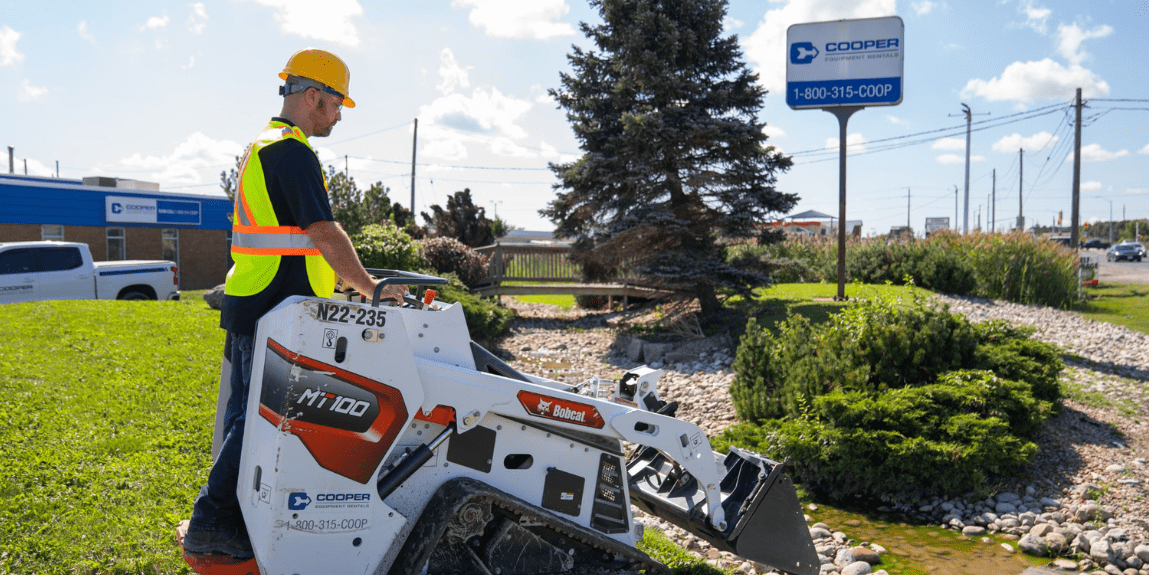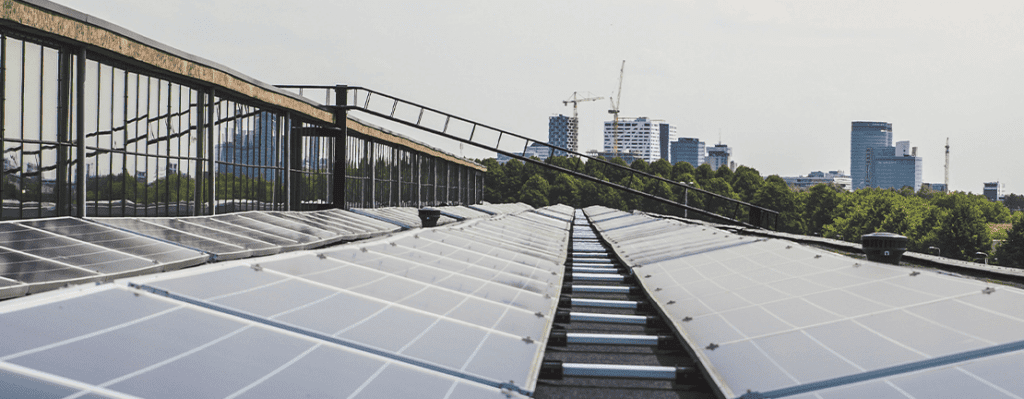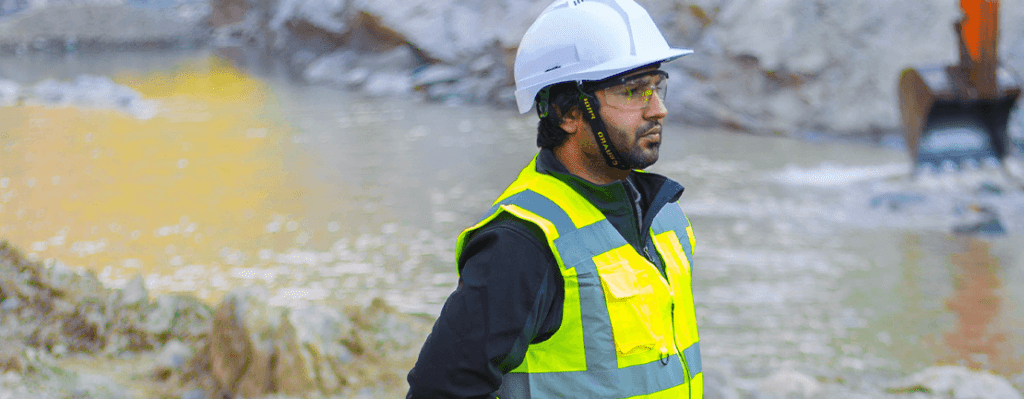

When the clock is ticking, we tend to prioritize. And at Trackunit, we’re no different. We’ve been pushing the Eliminate Downtime agenda for some years now, but like any industry-led movement, and particularly in a sector as complex as construction, it’s made up of many moving parts.
As part of that dynamic, we made data sharing central to the strategy in 2021. In 2022, we’re focusing on sustainability. Here’s why.
Speak to almost anybody in the construction industry, and there is every chance that they will give you a clear indication that they not only like the idea of sustainable construction, they would also like to be a part of making that happen.
Like Trackunit, the vast majority not only sees it as a desirable outcome, it recognizes it is a massive obligation to be taking advantage of the telematics revolution to set up their fleets in such a way that they are actively reducing their Co2 emissions through a variety of measures. But getting from A to B is not simple. In fact, even finding a way to agree on what sustainable construction might actually mean and what it might require is problematic.

In construction, this is exacerbated by a number of factors. We see certain sections of the industry like the large OEMs pushing a sustainability agenda through, for example, electric vehicles, but there is a lack of significant complementary infrastructure, meaning the ability of an electric vehicle fleet to operate for a full day is limited.
It’s not exactly a lack of joined-up thinking we’re seeing here, but it does indicate the issues facing the entire ecosystem where companies focus on their individual strategies rather than take a holistic approach to sustainable construction.
That’s why at Trackunit, we’ll be focusing our efforts on creating a dialog between stakeholders that we see as the starting point for a more industry-wide approach to sustainability. We already hold Round Table events with leading players and will hold our next such forum in early May where sustainability will play a key role.
This is no one-off to be shelved and quietly forgotten. In June, we’ll be staging the Eliminate Downtime Festival where our stated desire to boost efficiency in construction will sweep a broad brush that will take in the sustainability spectrum followed by a Hackathon ideas forum starting June 10 that will shed further light on where we could go with this. There will of course be more to come later in the year including an industry summit in September because we believe in momentum and agenda setting. And that can only be done through a collective industry effort.
It is, quite frankly, not before time that the industry gets its act together.
We know the intention is there but it’s also not unfair to say that construction as a sector needs a bit of pushing to take action.
The role of legislation here can’t be underplayed. Whether it’s national or supranational, directives or at least guiding principles are evident throughout the developed world and, as a quick glance at history shows, they are vital for progress.
When, for example, the US standardized in-vehicle, on-board diagnostics in the 1990s through its OBD2 directive, it sparked the creativity that ushered in an unintended, but highly welcome wave of innovation. That has since led to the kind of vehicle dashboards that we now consider the norm in the modern day, indicating how legislation can lead to bold changes coming into play quite rapidly.
That kind of legislative stick is exactly what the construction industry needs as that outside help is frequently the catalyst for change. The bolder the legislation, the better.
In environmental terms, and let’s not forget the equally pivotal role of societal dynamics for a more sustainable-friendly world here, the legislative process has predominantly focused on documentation and reporting of Co2 emissions. This is a critical development, but it’s important to remember that this is only the ‘crawling’ stage of our sustainability shift in the industry.
It is, in effect, a retrospective examination of what has already happened. What we really want to do now is get to the ‘walking’ stage and implement systems that enable fleets and contractors to accrue real-time ecological and efficiency benefits on a day-to-day basis.

That needs a fundamental reshaping of the business model to put sustainability absolutely at the center of all your activities. It might sound like a pipe dream, but there are examples aplenty. Businesses that have committed to the process have subsequently opened up new revenue streams that have in many cases helped them turn over a profit that has significantly outperformed where they were.
Schneider Electric, frequently lauded for its transformative business model, is one such example. The B2B electrical distributor reimagined its model to become an award-winning global leader in sustainability solutions and enjoyed €27bn annual revenues in 2019 from €15bn in 2007.
It shows that putting sustainability at the core of your model makes complete business sense as, increasingly, investors are becoming more ESG savvy and deliberately choosing to only invest in those companies that fit their vision of a better world. A framework with a common language for the sector is essential to making that happen.
So, where do we start? How do we move to the ‘walking’ stage? Perhaps the sensible first step would be the harmonization of data that has become part of the reporting and documenting process. Once in place, we can then think about the creation of a framework and a common language with the OEMs in particular, so that fleets on any given job site can act on the telematics quickly and effectively.
That way, you develop fleets that are more efficient, more optimal and which can have a dramatic effect on your Co2 emissions.
The framework is the key as, with data at the heart of the process, it enables you to use the right equipment at the right time and in a way that the machine was designed to be used.
When that happens, you are really on the way to dramatically altering one of the biggest issues in construction by addressing the idle/productivity ratio of 90:10. We’re chasing a power usage effectiveness metric that, in effect, everyone can use as a benchmark. This is why the dialog process we have set in motion and in which the major industry players are engaged is so important.
Getting there is, of course, not easy and we certainly don`t claim to have all the answers but we believe we can facilitate dialog and that collaboration across the industry and building shared frameworks will bring the entire sector forward. That ultimately makes more sense, economically and impact-wise, than every organization setting up its own sustainability division requiring resource, effort and serious strategic planning.
It sounds difficult, doesn’t it, but I’d like to point to a very personal example where I’ve seen effective change in the elimination of waste and the incubation of productivity happen. In a previous incarnation, back in the early 2000s, I entered a data industry where huge IT centers were the norm and every company had one.
All these servers, routers and switches were being utilized at about 10% of capacity, while consuming huge amounts of energy. That was around the time when modular design was coming into vogue and that meant we evolved quite quickly over a few years to a scenario where we were building as we needed rather than trying to architect a future that might not develop anyway. On a number of fronts, it really was the proverbial game changer.

If we continue on the personal theme, we shouldn’t underestimate the impact of the last two years either that we have all endured in some form or another, as a consequence of the COVID-19 pandemic. There’s been a very real issue for manufacturers to get the parts they require under restricted-trading circumstances with delays of 18-24 months and that has seen companies become very adept at extending the life cycle of their equipment.
If something had a life cycle of 4-5 years prior to COVID, it may well have nearly doubled through better care of the equipment, without in any way compromising health and safety.
If nothing else, it demonstrates that the mentality for change and adaptability exists and that there is an organic or perhaps needs-must sustainability process that is already well underway.
We are, and I will repeat again, at the ‘crawling’ stage on this road, but if I were to sum up, we can’t get off the highway now. Turning back is also no longer an option. So let’s move forward with confidence and propel construction towards the front of the conversation on sustainability. It can be done, but it will be done only when we can come together. We’re making it happen. Let’s see if together, we can make it happen faster.
If you want to stay up to date on events of the Eliminate Downtime initiative, I encourage you to sign up to our newsletter.

